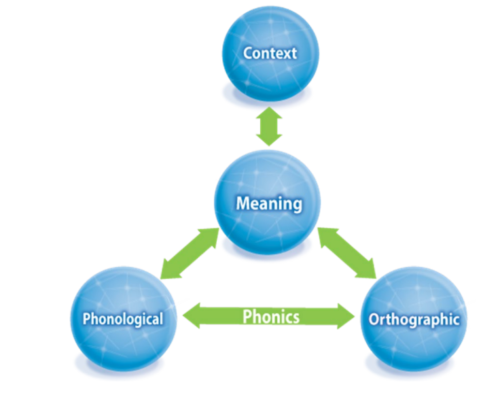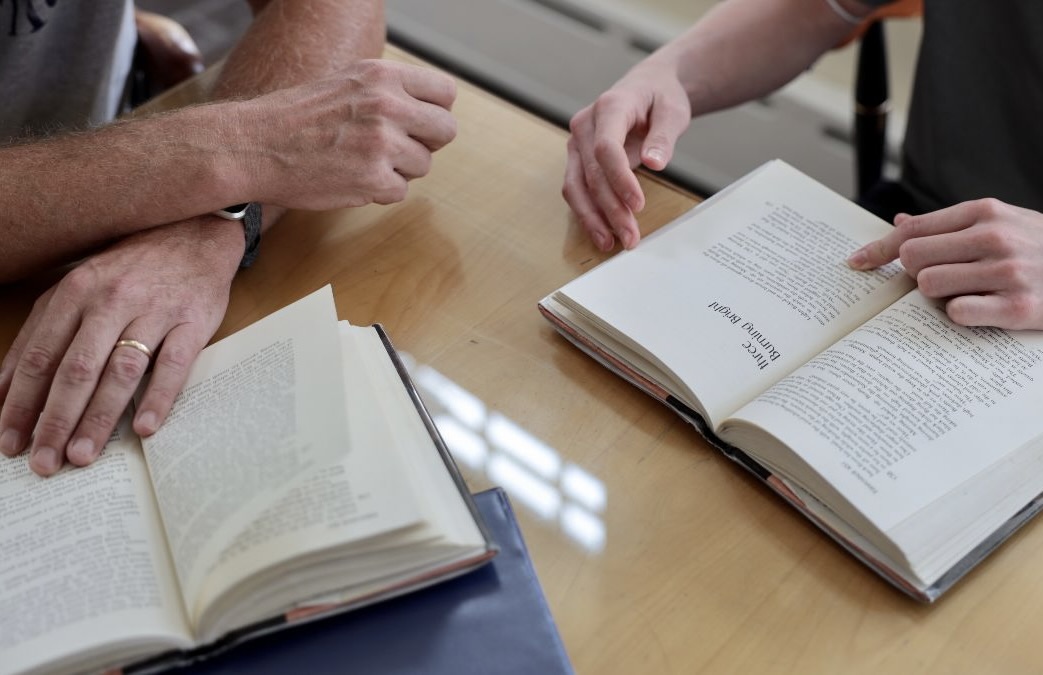The Decoding Toolkit
Previously, I wrote about the importance of building a common language with students by implementing a Decoding Toolkit. The key benefit of this approach is that, once established, it allows the teacher to more efficiently deliver instruction so time is not lost in explanation and background knowledge. Students with language-based learning disabilities benefit from accessing material through multiple modalities and approaches with as many chances to interact with the content as possible.
At Landmark, one way we promote this practice is through the use of the Language Box to encourage students to tap into their listening, speaking, reading, writing, and thinking skills. Similarly, when working at the word recognition level, we can build skills by activating the Four-Part Processing Model (Moats and Tolman, 2019, based on Seidenberg and McClelland, 1989). In doing so, we address the phonological, orthographic, meaning, and context of a given word and give students the greatest opportunity for success.

Based on Seidenberg & McClelland, 1989
One way that teachers can do this is through a strategy called Possum (phonology, orthography, semantics, syntax, understanding, and morphology), first developed by Maryanne Wolf and detailed in her book Proust and the Squid. Through this approach, teachers provide direct instruction to target each of the four processing systems, thereby improving their ability to interact together. As we know, with repetition comes automaticity, so the more we encourage practice, the more readily and rapidly students are able to derive meaning from a word. The demonstration below shows how this strategy can be employed in a 1:1 setting, though it could easily be adapted for small-group instruction. A key component is preparation. In the video, you’ll notice that the teacher and student have already built a solid foundation through the decoding toolkit, which allows instruction to move seamlessly. Moreover, the teacher is prepared with knowledge about the given word and is able to guide the student through each of the processing systems. An excellent resource to check out is www.etymology.com.
References
- Etymonline – Online Etymology Dictionary. Etymology dictionary: Definition, meaning and word origins. (n.d.). Retrieved December 19, 2022, from https://www.etymonline.com/
- Moats, L. C., & Tolman, C. A. (2019). Letrs: Language essentials for teachers of reading and spelling. Sopris West Educational Services.
- Seidenberg, M.S., & McClelland, J.L. (1989). A distributed, developmental model of visual word recognition and naming. Psychological Review, 96, 523 – 568.
- Wolf, M. (2010). Proust and the squid: The story and Science of the reading brain. Icon Books.



